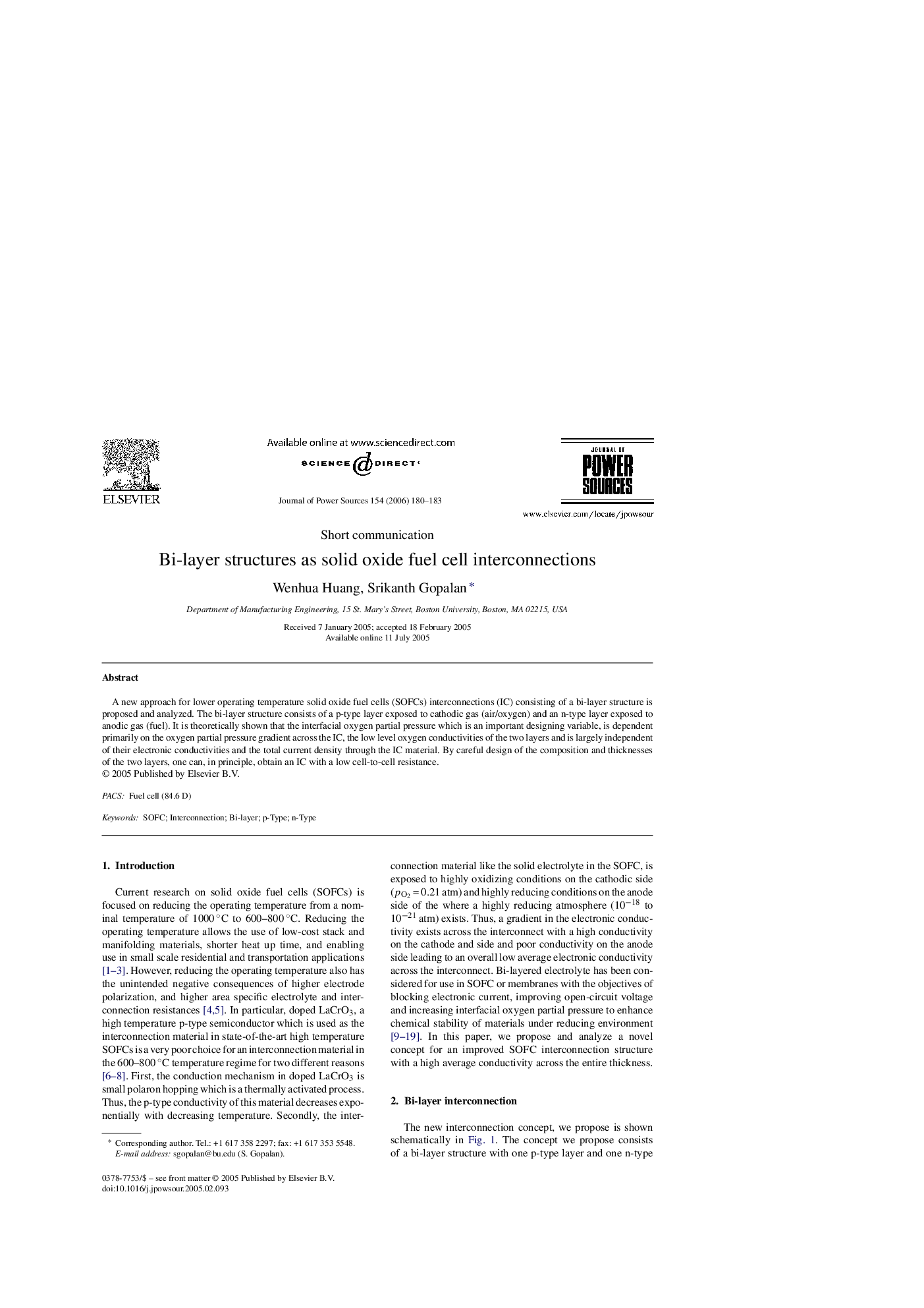| Article ID | Journal | Published Year | Pages | File Type |
|---|---|---|---|---|
| 1295116 | Journal of Power Sources | 2006 | 4 Pages |
A new approach for lower operating temperature solid oxide fuel cells (SOFCs) interconnections (IC) consisting of a bi-layer structure is proposed and analyzed. The bi-layer structure consists of a p-type layer exposed to cathodic gas (air/oxygen) and an n-type layer exposed to anodic gas (fuel). It is theoretically shown that the interfacial oxygen partial pressure which is an important designing variable, is dependent primarily on the oxygen partial pressure gradient across the IC, the low level oxygen conductivities of the two layers and is largely independent of their electronic conductivities and the total current density through the IC material. By careful design of the composition and thicknesses of the two layers, one can, in principle, obtain an IC with a low cell-to-cell resistance.
